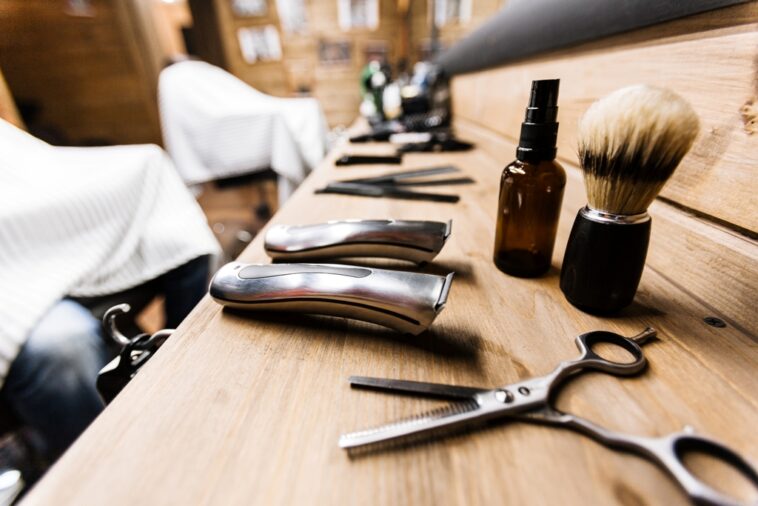Readers of a certain age may remember classic Saturday Night Live sketches from the late 1970s featuring Steve Martin as “Theodoric of York, Medieval Barber,” a barber and a surgeon whose treatments produce dubious results for his patients. While we may laugh, barbers of the medieval period were actually called barber-surgeons and not only practiced shaving, hair cutting and hair dressing, but also performed surgical operations such as bloodletting.
While such activities seem outrageous today, barbering is at least 6,000 years old and has morphed time and again to become the profession we know currently. Let’s take a look at some of the twists and turns barbering has taken over the millennia.
• As early as 6,000 years ago, barbering services were performed by Egyptian nobility with instruments usually formed from sharpened flint or oyster shells.
• Barbers of the Middle Ages not only practiced traditional barber’s duties, they also dressed wounds and performed surgical operations as barber-surgeons.
• In 1745, a bill was passed separating barbers from surgeons. Barbers kept the pole as their identification. The pole, consisting of red, white and blue stripes, represents red for blood, white for bandages and blue for veins.
• During colonial times, most men were smooth shaven and many of the rich wore wigs. The beard did not come into its own until the Civil War.
• By 1880, the average barber shop cost about $20 to equip and was 10 by 12 feet in size. Haircuts were five or 10 cents and shaves were three cents.
• In 1897, the state of Minnesota passed legislation for a barber license. For the next 40 years, various states enacted legislation to license and inspect barbers for sterile conditions.
• Irene Castle, a well-known dancer, popularized the bob cut in 1915. Barbers had to quickly learn how to perform the bob cut to keep up with rising demand.
• World War II brought the popularity of short hair. The flat top, butch, crew cut and the Princeton cut became popular.
• In the early 1960s, The Beatles set the stage for long hair. Many barbers who resisted the methods of cutting long hair were soon out of business.
• By 1985, over 50% of barber students were female. Since 1995, more than 50% of barber students are African-American.
• Successful barbers today must keep up with new technology, techniques and styles. Becoming a barber requires hundreds of hours of training and state licensing.
MetroWest Barber Shops
MetroWest is home to some great full-service barbers. If you want to treat dad to a new cut for Father’s Day, or freshen up your own look, check out one of these neighborhood shops:
Changing Lives Salon and Barbers
5920 Metropolis Way
Orlando, FL 32835
407.985.3777
Changing-Lives-Salon-And-Barbers.business.site
4-Gentlemen Barbershop and Lounge
2459 S. Hiawassee Rd., Suite 260
Orlando, FL 43835
407.237.0027
BarbershopAndLounge.com
The Ultimate Cave Barbershop
6965 Piazza Grande Ave., Suite 106
Orlando, FL 32835
407.630.6149
TheUltimateCaveBarber.com
EGO FOR MEN GROOMING
6996 Piazza Grande Ave., Studio 10
Orlando, FL 32835
267.629.1764
EgoForMenGrooming.com





Comments